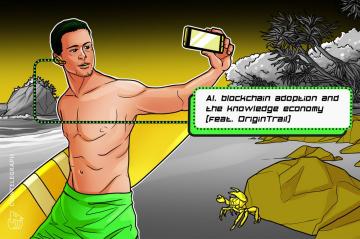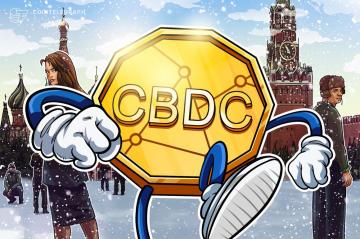Traditional venture capital funds drive valuations through multiple funding rounds. Startups aim for initial public offerings or other exits. Then the sharemarket decides upon a more realistic valuation.
But in cryptoland, tokens introduce market capitalization while a company is being built.
This means there are a lot of competing interests and agendas. Token sales for Web3 startups can be the bastard child of a personality cult leader founder and a bunch of VCs, raised by a group of Discord-dwelling degens manning a DAO, while speculators trade 24/7 and the media circles.
So, how do founding teams get the balance right between the needs and wants of the VCs and what’s best for the community? Are the interests of VC funds aligned with the interests of token holders?
 VC funding is necessary, but are VCs always working in the best interest of the community?
VC funding is necessary, but are VCs always working in the best interest of the community?
Even VCs were LUNAtics
Let’s start with LUNA’s collapse. Who did the due diligence? VC funding can have a big impact on whether the community invests or thinks a project is legitimate or not. The stamp of big-name funds carries credibility and traction before retailers can invest.
Retail investors got rekt when Terra’s algorithmic stablecoin project and ecosystem collapsed in May. The stories of homes and life savings being lost and suicide hotlines being posted on Reddit were alarming. Memes of Squid Games and Bernie Maddoff’s 150-year prison sentence were mashed up next to Terra founder Do Kwon’s attempt to save the ecosystem with a phoenix-like token called Luna 2.0.
Perhaps representative of retail investors in general, one retail investor who lost a substantial amount when the algorithmic stablecoin collapsed told me, he “didn’t really get it but thought it was too big to collapse overnight.”
On the other hand, some funds that trade complex financial products for a living made a killing.
Who did the due diligence? Who said pegging two related coins via complex math was a good idea? Most were just plain confused.
One very senior risk analyst at a crypto VC fund told me he held grave reservations regarding the “algorithm stablecoin.” But his team was assuaged by the cap table having some big names in crypto capital.
And he actually read LUNA’s filings from the United States Securities and Exchange Commission.
VCs look at cap tables and see who else invested. LUNA was widely considered a “blue chip” by then, leading among crypto analysts and then reputable institutions, such as Three Arrows Capital, Pantera Capital, and Coinbase Ventures. Pantera notably got its LUNA exit timing right, while Three Arrows Capital is in liquidation and has filed for bankruptcy.
Three Arrows Capital bought 10.9M locked LUNA for $559.6m – it's now worth $670.45.
Ouch
— Crypto Maxi (@cryptoMaxi420) June 14, 2022
Everyone wants to be the smartest guy in the room. “With the LUNA example, VC backers must be seeing something you don’t, was the thought,” according to that risk analyst.
“It always was a Ponzi, no point mincing words,” he tells Magazine.
He argues that “VCs can distort everything, even in who supports what L1 chains. It’s a PR war; VCs turbocharge the machine. I call it the VC hunger games.”
This is one high-profile example of the perils of VC funding for crypto communities.
What is a crypto VC anyway?
There is a difference between VCs and the retail investor community, and Web3 blurs the lines. Traditional VC fund managers often push for large capital deployment, a board seat, rapid growth and expedited exits. But Web3 VCs are often early investors who first engage as active community members, providing liquidity and governance to build out a project.
“Community” itself is a vexed concept, as participants can literally “sell out,” and institutions are part of the community too, having been involved from early on. Ethereum had 3,000-odd participants, a mix of individuals and institutions.
 ‘Squid Games’ memes emerged quickly after the LUNA collapse, as its founder Do Kwon is South Korean. Source: Twitter
‘Squid Games’ memes emerged quickly after the LUNA collapse, as its founder Do Kwon is South Korean. Source: Twitter
First, we need to understand who VCs are and where they come from, which will help us understand the dilemma of building an organic Web3 community.
The first crypto native funds emerged from investors who got lucky and made a killing on early crypto projects and were suddenly flush with cash. Many had worked on exchanges in the early days and, consequently, were on first-name terms with every token project that tried to get listed. So, they know pretty much everyone in the ecosystem and usually get the first bite at the early funding rounds of any decent project trying to raise capital.
Coinbase, Ethereum, Consensys and others produced some extremely wealthy individuals who went on to become investors in many projects. Some launched their own VC funds or firms, while others have stayed low-key to investing. But they all know each other, so they can get early access to deals.
Many exchanges also established incubators or accelerators, such as Binance Labs and Huobi, that incubate super early projects and take a percentage of tokens for funding. They can leverage their network for funding and promises of support, such as listing on their exchanges and social media help.
More recently, individuals have pooled capital to become institutional investors — e.g., coordinated capital investing through investment DAOs. Legally pooled funds management and taxation laws generally lead to these conversations around creating a DAO and/or legal investment vehicle structure.
So, Web3 VC firms now include a spectrum from 20-something degens who have established their own funds, electricians mining Bitcoin since 2013 to Softbank.
Mark Lurie, a VC turned Web3 founder, says:
“What do we even mean by community versus a VC firm? People love a villain and hate the man, but at the end of the day, they are all just people. VC in Web3 is a messy, amorphous concept in Web3. Is a group of 20-year-olds with a website an entity, a VC firm, or is that just a bunch of 20-year-olds? VCs also could just be a few whales.”
Yet, there is always a trade-off between an organic community and exit horizons when dealing with tradable liquid tokens.
wild chart pic.twitter.com/g0xbkWjgCy
— Turner Novak





























































